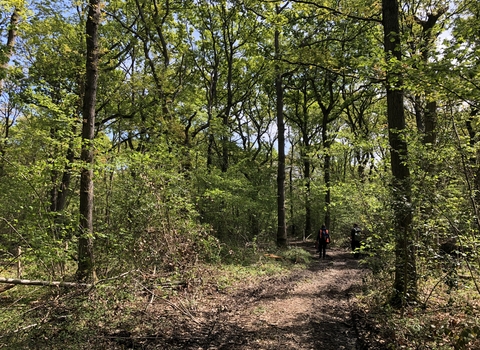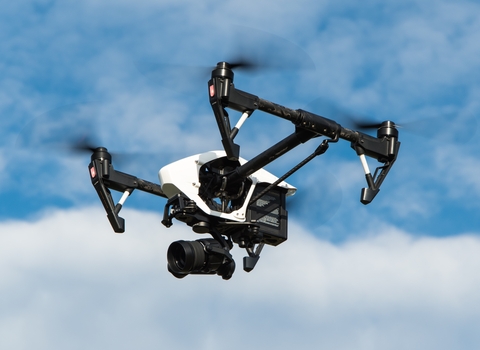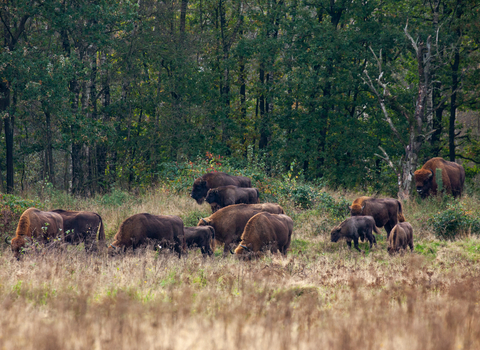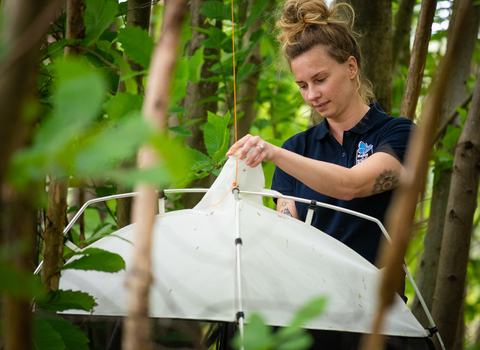What is monitoring and why do we need it in the Blean?
Monitoring is the act of observing and checking the quality of something, such as a heartbeat or the weather. For the Blean, we are observing and checking on the impacts our wilding project is going to have on biodiversity and the woodland environment.
In order to demonstrate the incredible potential of wilding as a nature-based solution to the climate and nature crises, it is crucial that we monitor each project site very carefully.
We need to first understand what the status quo is, what wildlife already lives in West Blean and Thornden Woods, and what the vegetation and soil look like in the project area before we start introducing our grazers.
This information is called a baseline, which will be used in the future to monitor what has changed, how it has changed and to quantify that change. The change will show us how the woods have reacted to our wilding efforts.
Latest news
Watch our Baseline Monitoring Deep Dive online talk here, with exciting findings on vegetation monitoring, invertebrate abundance and more!

Donovan Wright
How do we monitor a woodland?
Our fantastic monitoring and evidence team and site wardens and volunteers are out on site all the time conducting extensive fieldwork and analysing data on almost everything on site, including soil health, insect and animal abundance, vegetation structure and natural processes.
Read on to find out how we are integrating technology, data and innovation to monitor our projects and contribute to the global dialogue on conservation.

Remote Sensing
Unmanned aerial vehicles, or drones, offer fantastic opportunities for monitoring habitat characteristics. We need to closely monitor the Blean environment to track the benefits to biodiversity that introducing European bison will have and contribute to the global scientific understanding of wilding.
By surveying the different experimental areas with the drone, we can collect a wealth of information about how the different management approaches influence the structure and composition of the woodland vegetation at the Blean.
Using a drone and two specific sensors, we can measure a range of habitat attributes:
- One sensor stitches together hundreds of photographs to produce a three-dimensional model of the environment allowing our scientists to examine how vegetation and ground surface structure changes. By coupling this data with plant survey data, we can measure changes to the ecosystem over time.
- The other sensor is a multispectral camera, which detects specific wavelengths of light, from which we can calculate a range of indicators that detect land surface properties, such as vegetation presence or absence, vegetation greenness, water content of leaves, water bodies and different soil types.
Project design and delivery
The Wilder Blean project is designed as an experiment involving three areas across West Blean and Thornden Woods.
We’re following the BACI – ‘before, after, control, impact’ - study design. This means that not only will we be able to monitor the impact of reinstating a naturalistic grazing regime over time; watching, monitoring and measuring change, but we will also be able to compare the impacts of bison, in particular, with the impacts of longhorn cattle, whilst simultaneously watching and measuring how completely un-grazed areas within the site change and develop.
Area 1 is where we are introducing European bison, Exmoor ponies and Iron-Age pigs. The way bison graze and interact with their surroundings is unique as they target bark rather than other parts of a plant.
In Area 2 we will be introducing Longhorn cattle, a similarly large herbivore which doesn’t have the bison’s unique ecology and behaviour, Exmoor ponies and Iron-age Pigs.
The final Area 3 is a control area where no introduced grazing animals will be present and will be un-grazed and managed using traditional woodland management techniques.
This arrangement means that we will be able to monitor the impact of restoring a naturalistic grazing regime over time and we will also be able to compare the impacts of bison with the impacts of longhorn cattle.
Adventure Alliance

Credit: Tom Gibbs and Donovan Wright
Exciting findings so far...
In the UK, we’re headed for increasing species extinctions in the next 10 years, which is why ancient woodlands like the Blean are so important for our wildlife. We must act now to ensure a future for many of our treasured species.
Amazingly, monitoring at Blean has shown some incredible results already, which should only be enhanced by our wilding project.
- Red-list woodland specialist birds including Lesser spotted woodpeckers, Nightingales and Spotted flycatchers were recorded
- Several invertebrate species not seen for decades and only known to be found in the Blean were spotted
Read more findings below:
Conservation collaborations
This is the first bison release in the UK. However, in Europe, bison are used in several different countries to manage and enhance habitats. A project of this size and significance requires a lot of effort and input from many organisations and institutions and we are pleased to have the following collaborators.
Canterbury Christ Church University (CCCU) - we currently have a successful internship project involving collecting soil samples to carry out eDNA sequencing, looking specifically at soil fungi and bacteria.
Natural History Museum (NHM) - the NHM will be storing 142 soil samples for us for five years to hopefully carry out more exciting analysis in the future.
University of Huddersfield - we are collaborating with the University of Huddersfield to investigate aquatic diversity. Twenty pond samples have been collected as a baseline, looking at invertebrates, water samples and environmental conditions.
Royal Holloway University - we are in the process of starting up several collaborations with the Royal Holloway University, looking at dung analysis as well as ground/dung beetles assemblages and pollen using pitfall traps.
University of Kent - there is a potential exciting collaboration with the University of Kent coming up who are interested in looking into microbiome and gut health of our bison.
Queen Mary University of London – We are working with remote sensing experts, using LiDAR to quantify the effect of European Bison and Iron-Age pigs on vegetation and terrain structure and carbon sequestration rates.






